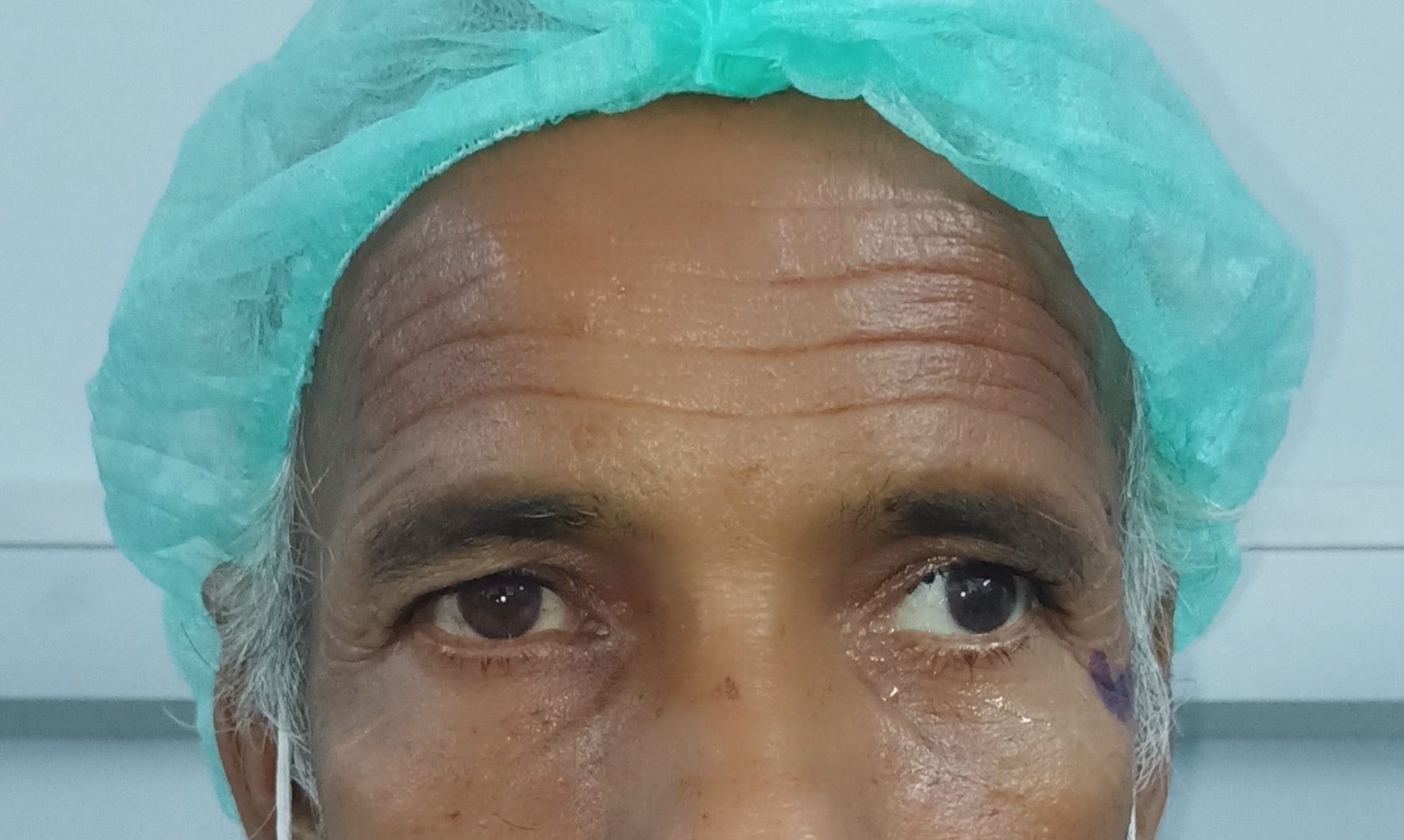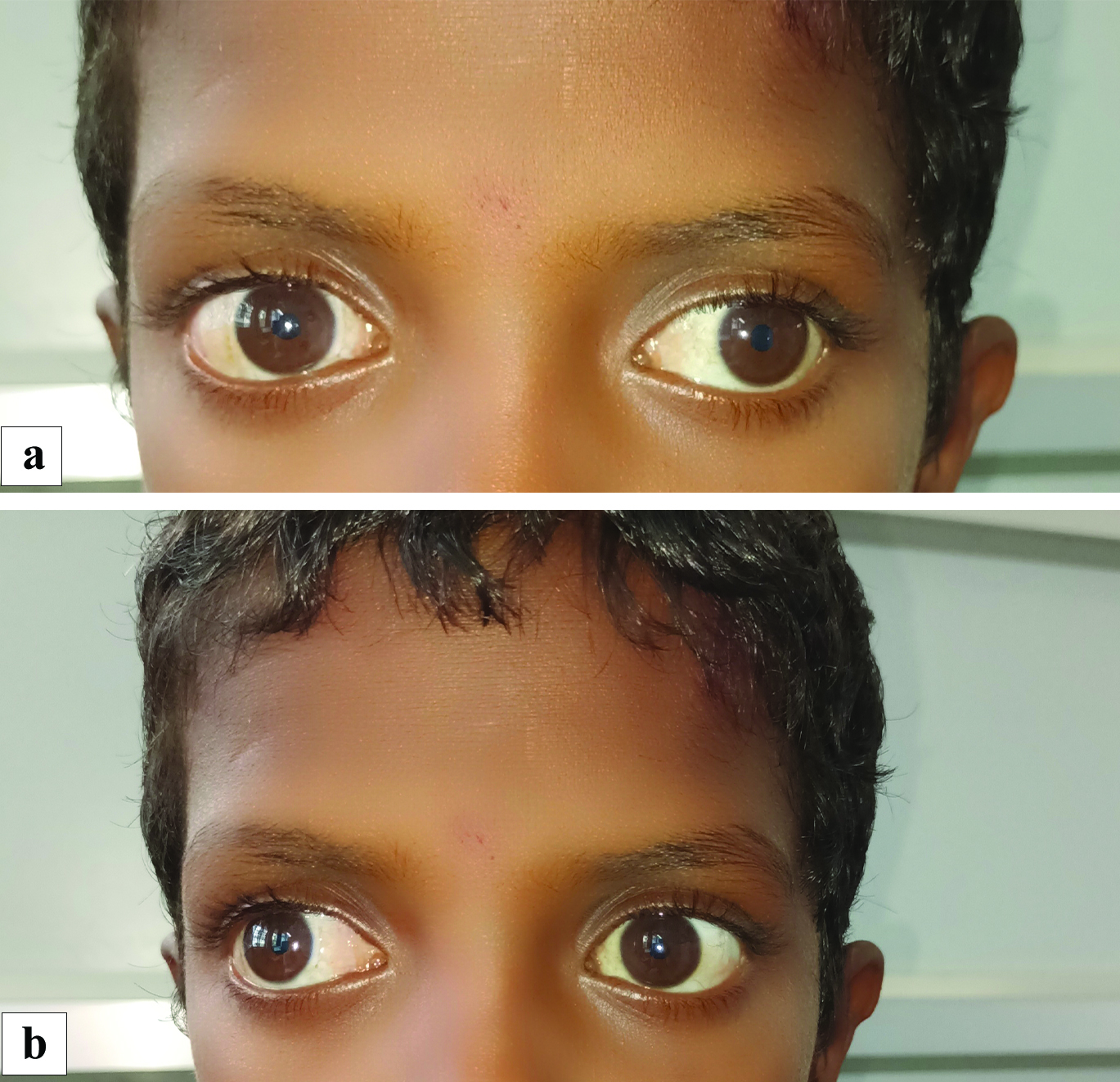[1]
Brodsky MC. DVD remains a moving target! Journal of AAPOS : the official publication of the American Association for Pediatric Ophthalmology and Strabismus. 1999 Dec:3(6):325-7
[PubMed PMID: 10613573]
[2]
Helveston EM. Dissociated vertical deviation-a clinical and laboratory study. Transactions of the American Ophthalmological Society. 1980:78():734-79
[PubMed PMID: 7020216]
[3]
Cherfan CG, Diehl NN, Mohney BG. Prevalence of dissociated strabismus in children with ocular misalignment: a population-based study. Journal of AAPOS : the official publication of the American Association for Pediatric Ophthalmology and Strabismus. 2014 Aug:18(4):374-7. doi: 10.1016/j.jaapos.2014.04.002. Epub 2014 Aug 1
[PubMed PMID: 25087642]
[4]
Kutluk S,Avilla CW,von Noorden GK, The prevalence of dissociated vertical deviation in patients with sensory heterotropia. American journal of ophthalmology. 1995 Jun;
[PubMed PMID: 7785688]
[5]
Brodsky MC. Dissociated vertical divergence: a righting reflex gone wrong. Archives of ophthalmology (Chicago, Ill. : 1960). 1999 Sep:117(9):1216-22
[PubMed PMID: 10496394]
[6]
Guyton DL. Dissociated vertical deviation: an acquired nystagmus-blockage phenomenon. The American orthoptic journal. 2004:54():77-87. doi: 10.3368/aoj.54.1.77. Epub
[PubMed PMID: 21149089]
[7]
ten Tusscher MP, van Rijn RJ. A hypothetical mechanism for DVD: unbalanced cortical input to subcortical pathways. Strabismus. 2010 Sep:18(3):98-103. doi: 10.3109/09273972.2010.502956. Epub
[PubMed PMID: 20843186]
[8]
Arslan U,Atilla H,Erkam N, Dissociated vertical deviation and its relationship with time and type of surgery in infantile esotropia. The British journal of ophthalmology. 2010 Jun;
[PubMed PMID: 20508049]
[9]
Yue YY, Zhao KX, Ma HZ, Hua N, Wang LJ. [Treatment of dissociated vertical deviation by shifting fixating eye]. [Zhonghua yan ke za zhi] Chinese journal of ophthalmology. 2003 Dec:39(12):724-6
[PubMed PMID: 14769222]
[10]
McNeer KW. Botulinum toxin injection into the superior rectus muscle of the non-dominant eye for dissociated vertical deviation. Journal of pediatric ophthalmology and strabismus. 1989 Jul-Aug:26(4):162-4
[PubMed PMID: 2760787]
[11]
Strominger MB, Rogers GL, Wagner RS. Dissociated vertical deviation and inferior oblique overaction. Journal of pediatric ophthalmology and strabismus. 2009 May-Jun:46(3):132-6
[PubMed PMID: 19496491]
[12]
Nelson LB, Anterior transposition of the inferior oblique for dissociated vertical deviation. Journal of pediatric ophthalmology and strabismus. 2007 May-Jun;
[PubMed PMID: 17542435]
[13]
Wong CY, Ng JS, Goh TY. Combined resection and anterior transposition of the inferior oblique muscle for the treatment of moderate to large dissociated vertical deviation associated with inferior oblique muscle overaction. Journal of pediatric ophthalmology and strabismus. 2003 Jul-Aug:40(4):194-5
[PubMed PMID: 12908529]
[14]
Broniarczyk-Loba A, Nowakowska O, Loba P. [Difficulties in diagnosis and treatment of dissociated vertical deviation (DVD). Part II--own experiences]. Klinika oczna. 2007:109(7-9):292-6
[PubMed PMID: 18260282]
[15]
Schwartz T, Scott W. Unilateral superior rectus recession for the treatment of dissociated vertical deviation. Journal of pediatric ophthalmology and strabismus. 1991 Jul-Aug:28(4):219-22
[PubMed PMID: 1919970]
[16]
Kii T,Ogasawara K,Ohba M,Hotsubo M,Sakai N,Nakagawa T, [The effectiveness of the Faden operation on the superior rectus muscle combined with recession of the muscle for the treatment of dissociated vertical deviation]. Nippon Ganka Gakkai zasshi. 1994 Jan;
[PubMed PMID: 8109453]
[17]
Noel LP, Parks MM. Dissociated vertical deviation: associated findings and results of surgical treatment. Canadian journal of ophthalmology. Journal canadien d'ophtalmologie. 1982 Feb:17(1):10-2
[PubMed PMID: 7083051]
[18]
Stager DR Sr, Beauchamp GR, Stager DR Jr. Anterior and nasal transposition of the inferior oblique muscle: a preliminary case report on a new procedure. Binocular vision & strabismus quarterly. 2001:16(1):43-4
[PubMed PMID: 11240936]
Level 3 (low-level) evidence
[19]
Arroyo-Yllanes ME, Escanio-Cortés ME, Pérez-Pérez JF, Murillo-Murillo L. [Unilateral tucking of the inferior rectus muscle for dissociated vertical deviation]. Cirugia y cirujanos. 2007 Jan-Feb:75(1):7-12
[PubMed PMID: 17470318]
[20]
Gamio S, A surgical alternative for dissociated vertical deviation based on new pathologic concepts: weakening all four oblique eye muscles. Outcome and results in 9 cases. Binocular vision
[PubMed PMID: 11874379]
Level 3 (low-level) evidence
[21]
Mravicic I, Gulic MP, Barisic A, Biscevic A, Pjano MA, Pidro A. Different Surgical Approaches for Treatment of Dissociated Vertical Deviation (DVD). Medical archives (Sarajevo, Bosnia and Herzegovina). 2019 Dec:73(6):386-390. doi: 10.5455/medarh.2019.73.386-390. Epub
[PubMed PMID: 32082005]
[22]
Loba P, Broniarczyk-Loba A. [Difficulties in diagnosis and treatment of dissociated vertical deviation (DVD). Part I]. Klinika oczna. 2007:109(7-9):356-8
[PubMed PMID: 18260298]
[23]
Brodsky MC, Donahue SP, Vaphiades M, Brandt T. Skew deviation revisited. Survey of ophthalmology. 2006 Mar-Apr:51(2):105-28
[PubMed PMID: 16500212]
Level 3 (low-level) evidence
[24]
Olitsky SE,Coats DK, Complications of Strabismus Surgery. Middle East African journal of ophthalmology. 2015 Jul-Sep;
[PubMed PMID: 26180463]


